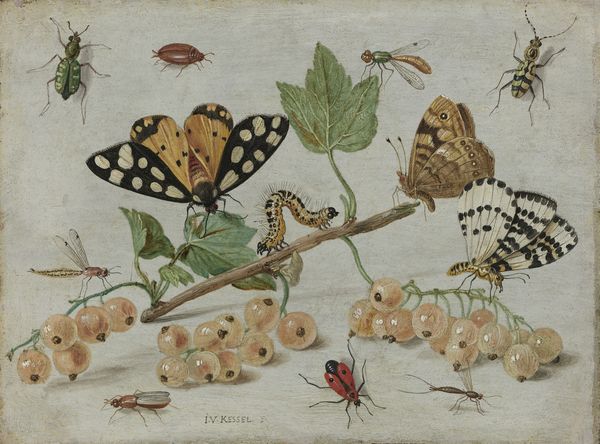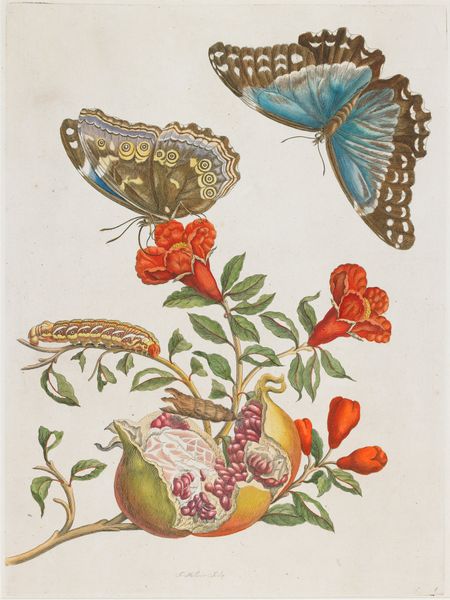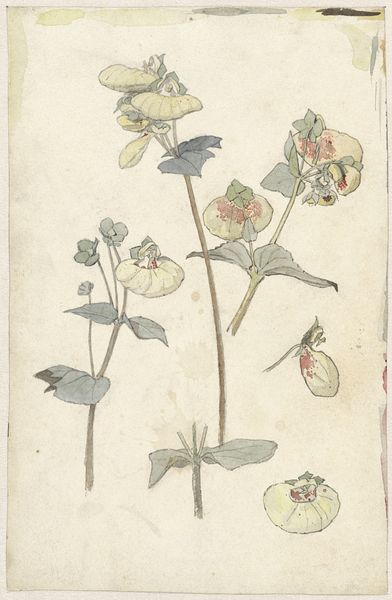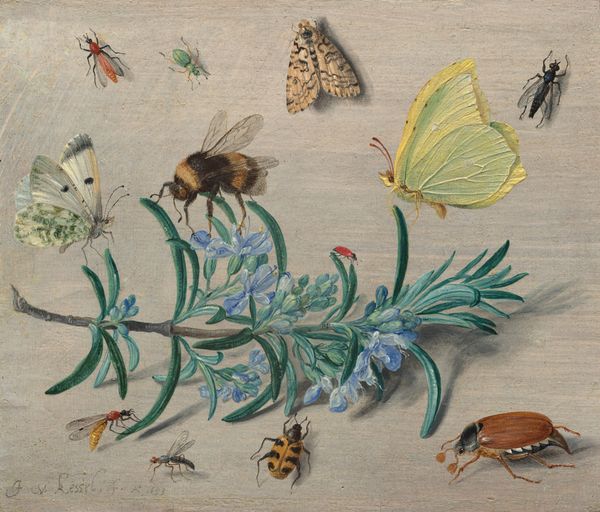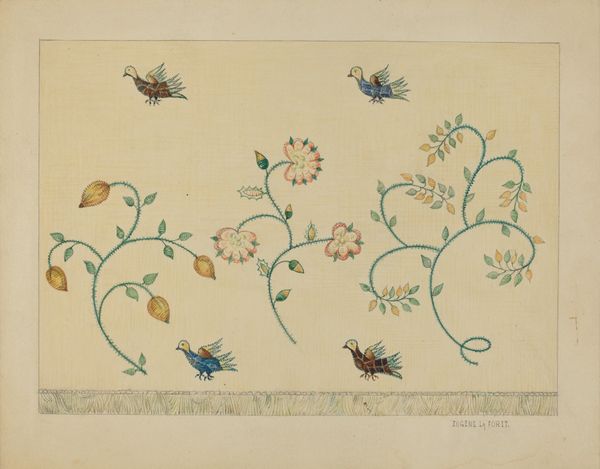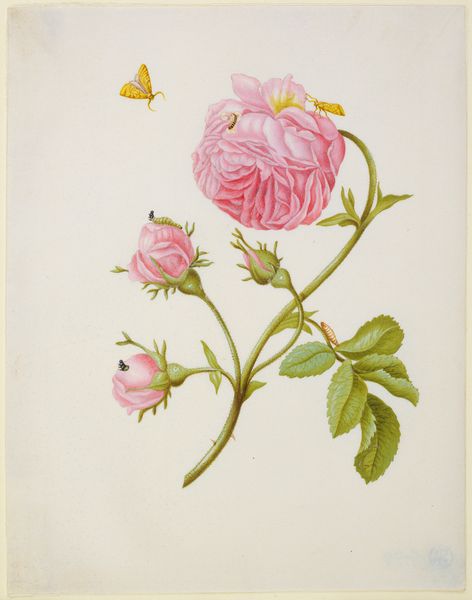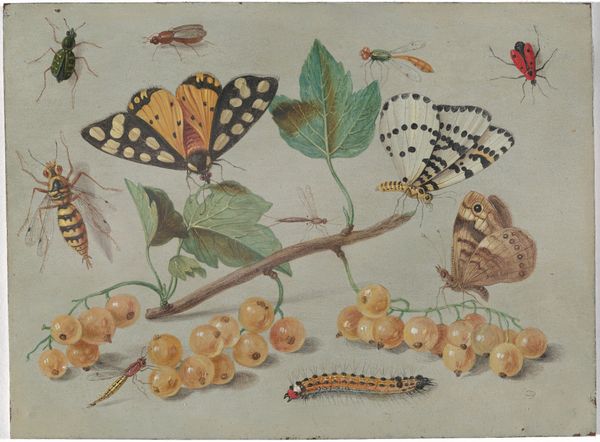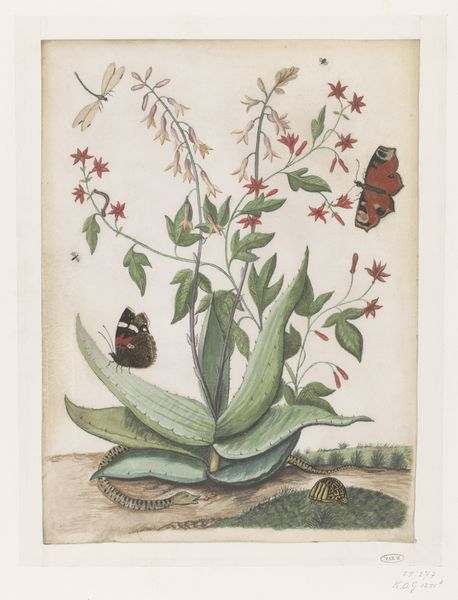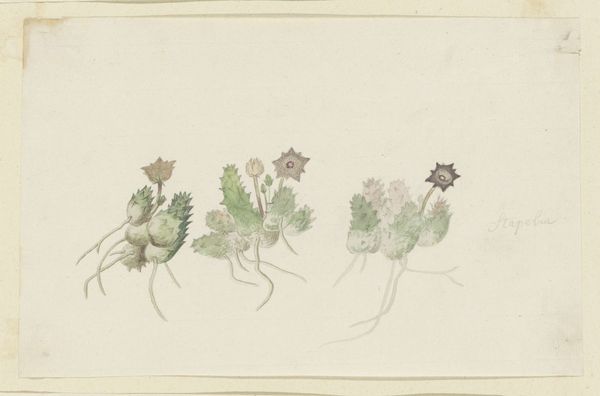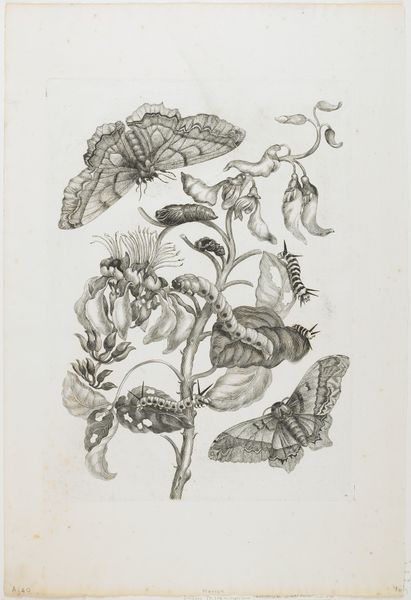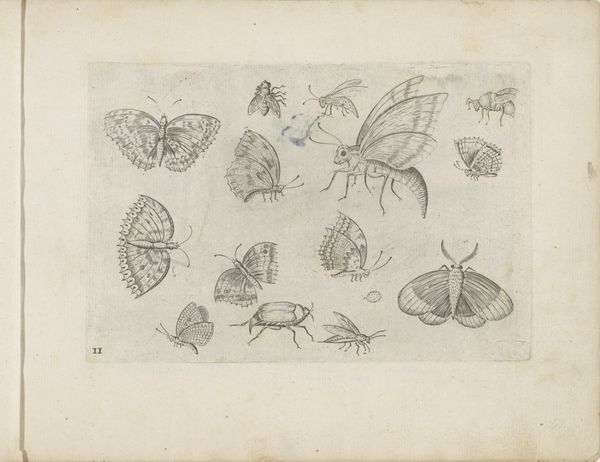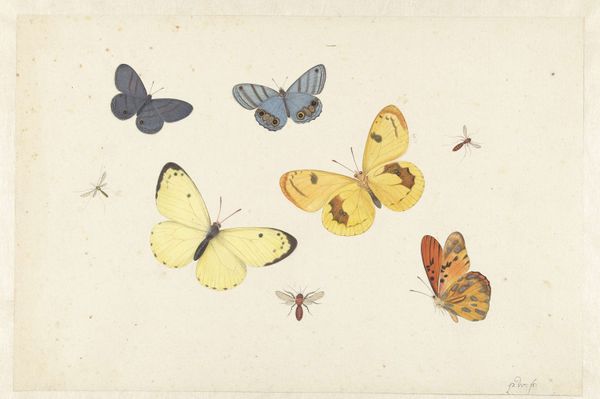
drawing, watercolor, ink
#
portrait
#
drawing
#
water colours
#
possibly oil pastel
#
11_renaissance
#
watercolor
#
ink
#
coloured pencil
#
watercolour illustration
#
northern-renaissance
#
botanical art
Dimensions: height 130 mm, width 166 mm
Copyright: Rijks Museum: Open Domain
Curator: Here we have "A Rose and Five Insects" by Christoffel van den Berghe, dating from 1618. It appears to be rendered in watercolor and ink. What are your initial thoughts? Editor: It feels like a study in miniature. There's an incredible delicacy in the way the rose petals are rendered, almost fragile. And the insects are incredibly lifelike. Curator: I find myself drawn to the precision in the rendering. This wasn't merely a painterly impression; it seems intended to display considerable technical skill. Look at the layering of the watercolor washes. Were such botanical studies used as design templates, perhaps for textiles or other crafts? Editor: I see a symbolic intent too. The rose, of course, speaks of love, beauty, and transience. The insects could represent the fleeting nature of life. Their presence suggests a kind of vanitas theme. It would be interesting to study what each insect stood for at the time. Curator: The materiality does shape the symbolism though, doesn't it? Watercolour on paper…consider its accessibility relative to oil paints on canvas. This would affect not just production cost, but distribution and perhaps the kind of viewership. This medium is democratic; its use tells a specific story of consumption in art making at the time. Editor: Yes, there's a sense of intimacy created by the scale and medium. One could easily imagine this adorning a small, private collection. Do we know what the artist’s intentions were? Did the artist receive commissions? Or what was their social status in general? Curator: Research suggests that the artist occupied a fairly ambiguous position between artisan and "artist" in the modern sense. They were most likely associated with studios that met diverse kinds of aesthetic demands from a growing, diverse, and complicated bourgeoisie class. Editor: It's fascinating how this detailed piece connects with wider ideas about the era. Curator: Precisely! Art's intrinsic value is found in that connection. Editor: Yes, considering how it mirrors the intersection of culture and symbolism makes this piece memorable.
Comments
rijksmuseum about 2 years ago
⋮
Drawn floral still lifes from the first half of the 17th century are rare. Only later in the century would flower arrangements come to occupy a modest place in the art of drawing of the Northern Netherlands. Christoffel van den Berghe’s still life consists of a single blossom. The large pale pink rose faces down. Could this be a reference to the transience of all earthly life?
Join the conversation
Join millions of artists and users on Artera today and experience the ultimate creative platform.
